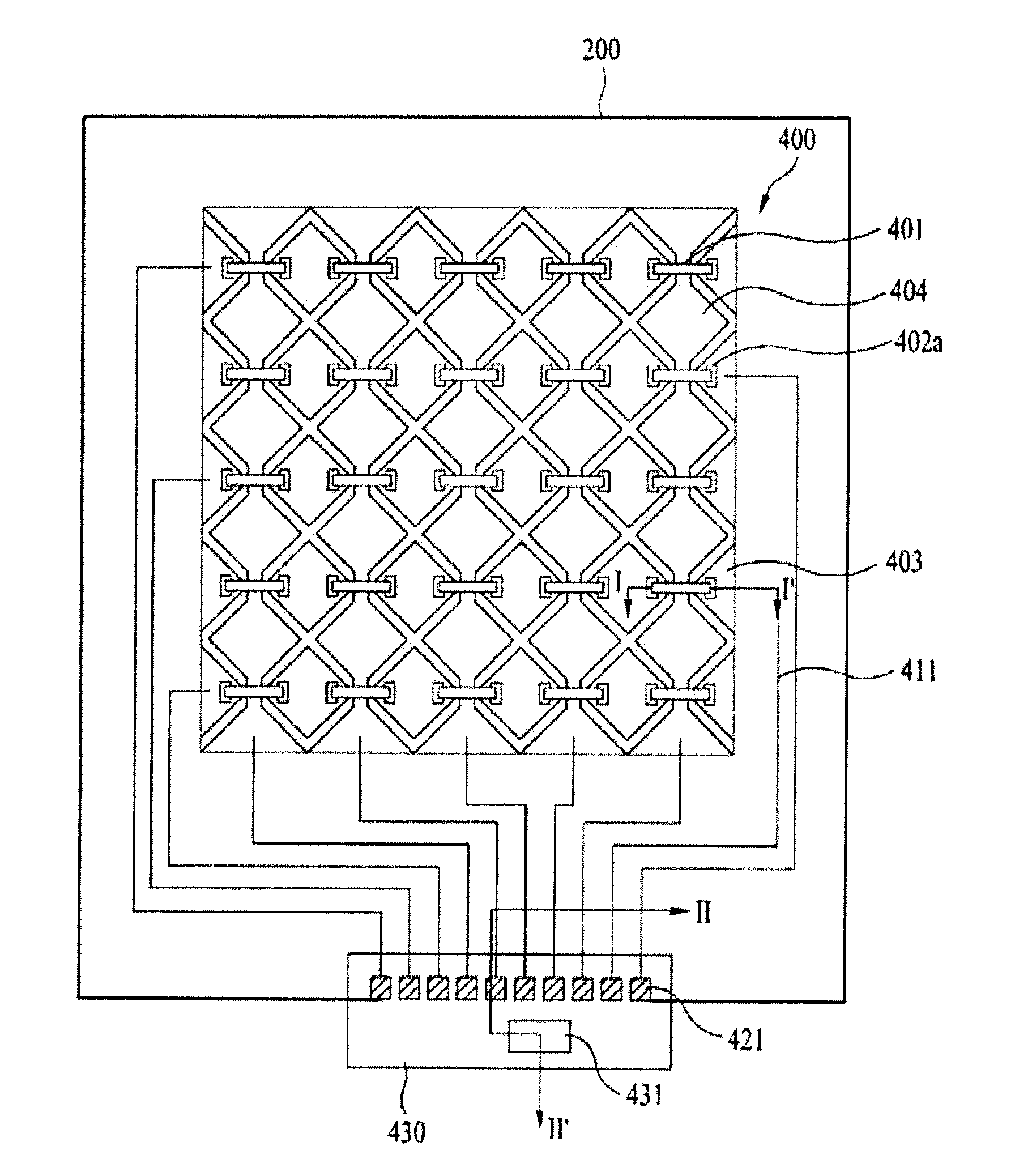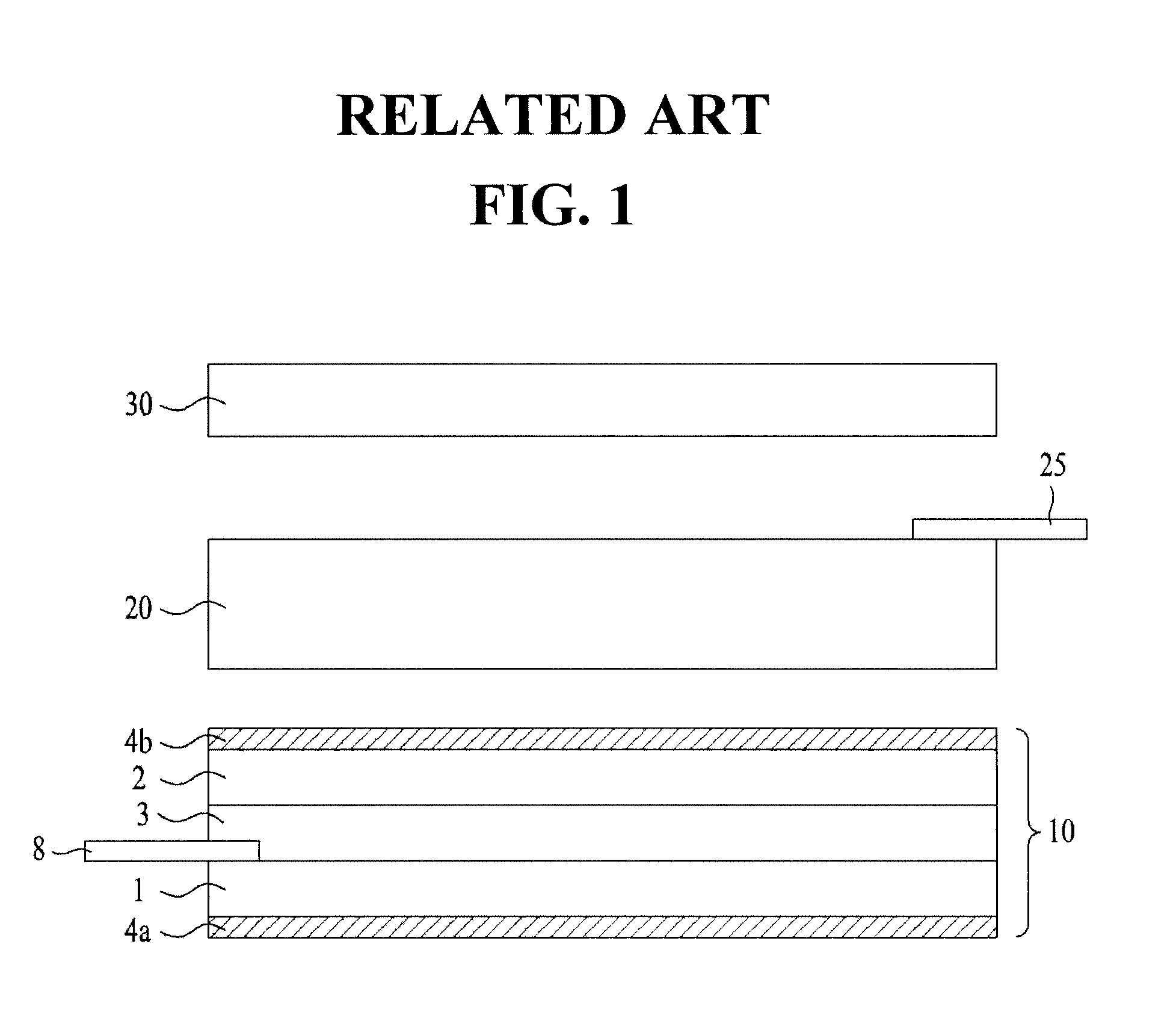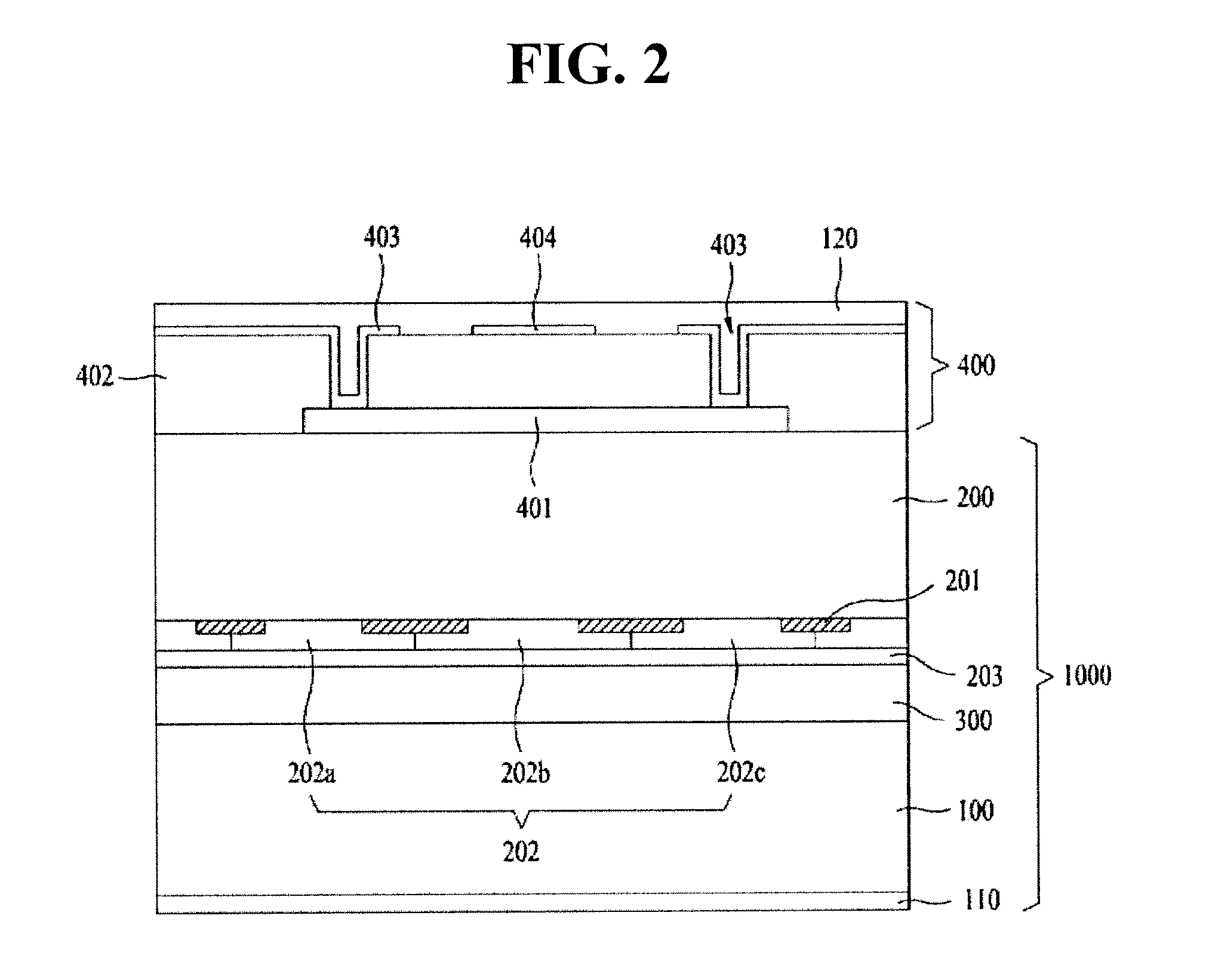Touch panel-integrated liquid crystal display device
a liquid crystal display device and touch panel technology, applied in the field of touch panel, can solve the problems of increasing the size of the periphery, increasing the total thickness, and requiring numerous manual mounting operations, so as to reduce the total number of substrates used and optimize the connection
- Summary
- Abstract
- Description
- Claims
- Application Information
AI Technical Summary
Benefits of technology
Problems solved by technology
Method used
Image
Examples
first embodiment
[0105]FIG. 5 is a plan view illustrating connection between a touch panel driving portion and a liquid crystal panel driving portion for a touch panel-integrated liquid crystal display device according to the present invention.
[0106]As shown in FIG. 5, for the touch panel-integrated liquid crystal display device according to the first embodiment, the FPC 430 for driving the touch panel 400 is formed at one outer surface (upper part of the drawing) of the second substrate 200 and the PCB 150 for driving the liquid crystal panel is formed at the other side (lower part of the drawing) of the first substrate 100.
[0107]In this case, the other side provided with the PCB 150 of the first substrate 100 protrudes, as compared to the second substrate 200, the seal pattern (reference numeral “250” in FIG. 4 of the first and second substrates 100 and 200 is formed at the edge in which the first and second substrates 100 and 200 overlap each other, partially overlaps the seal pattern 250 and the...
second embodiment
[0114]FIG. 6 is a plan view illustrating connection between a touch panel driving portion and a liquid crystal driving portion for a touch panel-integrated liquid crystal display device according to the present invention.
[0115]The touch panel-integrated liquid crystal display device according to the second embodiment shown in FIG. 6 is different from that of the first embodiment in that FPCs 430a and 430b are arranged at both sides of the second substrate 200.
[0116]Similarly, the FPCs 430a and 430b are formed in a different direction than the PCB 150, and the first substrate 100 overlaps the second substrate 200 at one side in which the FPCs 430a and 430b are formed. In this overlap region, there is no risk of shorting of metal lines formed in the FPCs 430a and 430b. Also, an additional double-sided tape is provided at one side of the first substrate 100 or second substrate 200 corresponding to the FPCs 430a and 430b to allow the FPCs 430a and 430b to be bent to a lower part of the ...
third embodiment
[0118]FIG. 7 is a plan view illustrating connection between a touch panel driving portion and a liquid crystal panel driving portion for a touch panel-integrated liquid crystal display device according to the present invention. FIG. 8 is a perspective view illustrating a variant of the touch panel-integrated liquid crystal display device of FIG. 7.
[0119]As shown in FIGS. 7 and 8, for the touch panel-integrated liquid crystal display device according to the third embodiment, FPCs 440a and 440b alternate with the COF 130 connected to the PCB 150 on the side at which the PCB 150 is formed. At this time, when one side of FPCs 440a and 440b is connected to the pad electrode of the touch panel in order to drive the touch panel and is bent at one side of the second substrate 200, the other side thereof is connected to the PCB 150. That is, in this case, the other side of the FPC 440a or 440b is connected to one side of the PCB 150 to synchronize and control operation of the touch panel thr...
PUM
 Login to View More
Login to View More Abstract
Description
Claims
Application Information
 Login to View More
Login to View More - R&D Engineer
- R&D Manager
- IP Professional
- Industry Leading Data Capabilities
- Powerful AI technology
- Patent DNA Extraction
Browse by: Latest US Patents, China's latest patents, Technical Efficacy Thesaurus, Application Domain, Technology Topic, Popular Technical Reports.
© 2024 PatSnap. All rights reserved.Legal|Privacy policy|Modern Slavery Act Transparency Statement|Sitemap|About US| Contact US: help@patsnap.com










